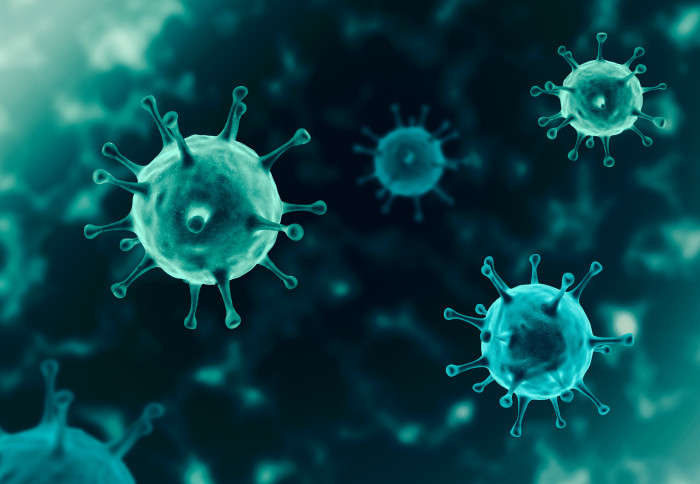Q&A: Imperial experts discuss new variant Omicron

What is the new variant, how is it different, and how concerned should we be?
A new COVID-19 variant has received widespread media coverage due to fears that it could be more transmissible and make vaccines less effective. It contains an unusually high number of mutations, particularly in the spike protein – the part of the virus that is targeted by most vaccines.
The variant – known as B.1.1.529 or the Omicron variant – has been found in South Africa, Hong Kong and Israel, and has prompted the UK government to add six countries in Africa to its travel red list.
B.1.1.529 was first sequenced by teams working in Botswana and Hong

Kong before scientists in South Africa raised concerns following a spike in COVID cases in some regions of the country. Imperial researchers are one of the partners of the South African experts who are studying the variant.
Experts from Imperial College London – Professor Neil Ferguson, Director of Imperial’s MRC Centre for Global Infectious Disease Analysis and Jameel Institute, Professor Wendy Barclay, Head of Imperial’s Department of Infectious Diseases, and Dr Tom Peacock from the Department of Infectious Diseases – have shared their analysis on the latest pandemic development.
Q: What do we know so far?
“We do not yet have reliable estimates of the extent to which B.1.1.529 might be either more transmissible or more resistant to vaccines, so it is too early to be able to provide an evidence-based assessment of the risk it poses.” Professor Neil Ferguson Director of Imperial’s MRC Centre for Global Infectious Disease Analysis
A (Neil Ferguson): The B.1.1.529 variant has an unprecedented number of mutations in the Spike protein gene, the protein which is the target of most vaccines. There is therefore a concern that this variant may have a greater potential to escape prior immunity than previous variants. It is also concerning that this variant appears to be driving a rapid increase in case numbers in South Africa. The UK Government’s move to restrict travel with South Africa is therefore prudent. However, we do not yet have reliable estimates of the extent to which B.1.1.529 might be either more transmissible or more resistant to vaccines, so it is too early to be able to provide an evidence-based assessment of the risk it poses. Addressing that gap is a top priority of researchers in South Africa and their partners around the world, including at Imperial College.
Q: Why are these mutations especially concerning, which parts of the virus do they affect, and what might they do the virus?
A (Tom Peacock): In the last months we have gained a lot of knowledge about the molecular virology of SARS-CoV-2, and what the effects of various mutations seen in previous mutations can be. This means we can look at the constellation of mutations in the genome sequence of the new variant and make educated predictions about the impact they will have.
Most of what we know is about the spike protein of the virus – the target of vaccines and of the monoclonal antibodies that can be used to treat individuals infected with the virus. There are more mutations in the Spike protein of the B.1.1.529/Omicron variant than in any other variant we’ve seen so far. Equally, these mutations are in positions on the protein that cause us concern, because it looks as if they may compromise how well the antibodies we make after infection or vaccination can fight off the virus.
“These mutations are in positions on the protein that cause us concern, because it looks as if they may compromise how well the antibodies we make after infection or vaccination can fight off the virus.” Dr Tom Peacock Research Associate in Department of Infectious Diseases
When our immune systems respond to the vaccine, they make antibodies that target different features on the spike protein, and stop the virus from entering our cells, thus protecting us from infection and disease. We all develop what is known as a polyclonal response - that means we make a cocktail of antibodies to several different parts of the spike. That is good for us because if the virus develops one mutation that throws off one subset of antibodies to one part of spike, we usually have other antibodies that still work to protect us. In other words, there is extra capacity in the system.
The reason we are concerned about the new variant is that it appears to have mutations in all of the identified antigenic sites, both in the receptor binding domain at the tip of spike and also in the N terminal domain on the side of spike. We would predict this could impact spike protein recognition by the vast majority of antibodies, even in a polyclonal response. When a person has fewer antibodies, or when those antibodies are less well able to bind to spike, we know that vaccine effectiveness is compromised. So, we predict the new variant might be less well controlled by the vaccines we currently have. However, it is unclear as yet how much the new variant may affect our vaccines.
Sometimes a plethora of changes such as this come with a fitness cost to the virus – they may occur in one individual but they don’t spread beyond that because they compromise the transmission potential of the virus. However, we can also see two important changes in another region of the spike protein (called the furin cleavage site) and we believe that these types of changes are associated with increased transmissibility – for example the Delta variant has a very potent mutation in this region. In addition, another mutation in the new variant (the change at residue 501 to tyrosine) is associated with better binding of the spike protein on virus particles to the ACE2 receptors of our cells, and contributes to increased transmission of the Alpha variant.
There are also changes in the Omicron variant beyond the spike protein, in other genes of the virus such as the nucleoprotein, that have recently been linked with increased fitness of SARS CoV-2 in human cells. This is because they perhaps make the virus better at assembling and packing its genome inside its particles, and perhaps allow the virus to counteract our innate immune response (known as interferon) more effectively.
Q: How worried should we be?
“It seems possible that we have a variant that that may be fit, transmissible and has the potential to at least partly escape the immunity generated by the vaccines [and] previous infection.” Professor Wendy Barclay Head of Imperial's Department of Infectious Diseases
A (Wendy Barclay): Taking all the changes we can see on the sequence together, and bearing in mind the reports of the epidemiology of the virus so far in South Africa – where the virus appears to be outgrowing Delta variant rapidly and increasing case numbers are being reported – it seems possible that we have a variant that may be fit, transmissible and has the potential to at least partly escape the immunity generated by the vaccines we are currently using and by previous infection. However, we don’t yet know for sure if the Omicron variant has increased transmissibility or will compromise vaccine effectiveness. We need to analyse epidemiological data as it emerges (as was done for the Alpha and Delta variants).
Second, we need to measure how well this virus replicates in model systems in the lab, and most importantly measure the ability of antibodies (from people who have been vaccinated or previously infected) to neutralise the new variant compared with previous variants such as Alpha, Beta or Delta. We know a lot about how well our vaccines work against those. Labs all around the world are gearing up to do this including those with the genome to phenome consortium here in the UK.
Q: What if the vaccines don’t work against the new variant?
A (Wendy Barclay): If antibodies from our current vaccines are no longer quite so good at neutralising the virus then policymakers have options.

Firstly, to continue to urge as many people as possible to get the vaccines we do have, including booster doses if they are eligible. This is because even though it is not perfectly matched, we know that simply increasing the overall amounts of antibodies (such as after second and third booster doses) can somewhat compensate for any mismatch between the vaccine and the virus. Also, the vaccines we are using now are definitely effective against the Delta variant, and anything we can do now to get current case numbers down will help. We really don’t want Delta and Omicron circulating at the same time throughout this coming winter when there is already great pressure on the NHS.
Second, to also help reduce case numbers, we can all practise better social distancing, wear masks in crowded places, and show some restraint as we head towards the holiday season.
Third, we can begin to make new vaccines that are better matched to the new virus. This will take time, likely months, but vaccine manufacturers should be gearing up to do this immediately.
We are trying to buy some time by slowing the import of this new variant into the UK and across the rest of the world. The virus has already been detected in Hong Kong and Israel in travellers returning from South Africa so it will only be a matter of time before it arrives in the UK – we should use that time carefully.
Article text (excluding photos or graphics) © Imperial College London.
Photos and graphics subject to third party copyright used with permission or © Imperial College London.
Reporter
Conrad Duncan
Communications Division
Emily Head
Communications Division